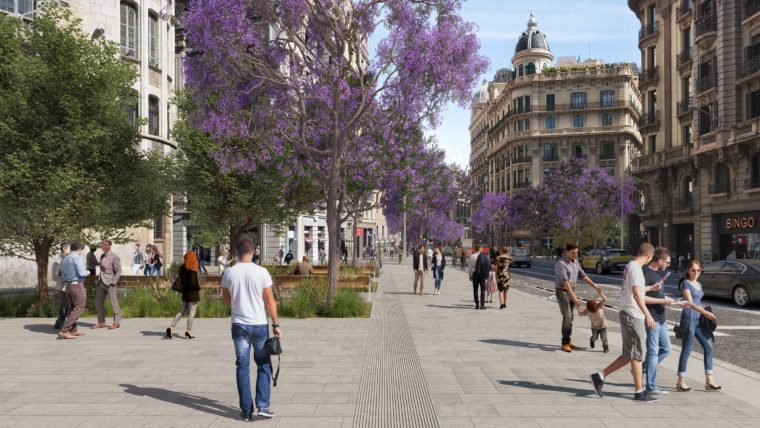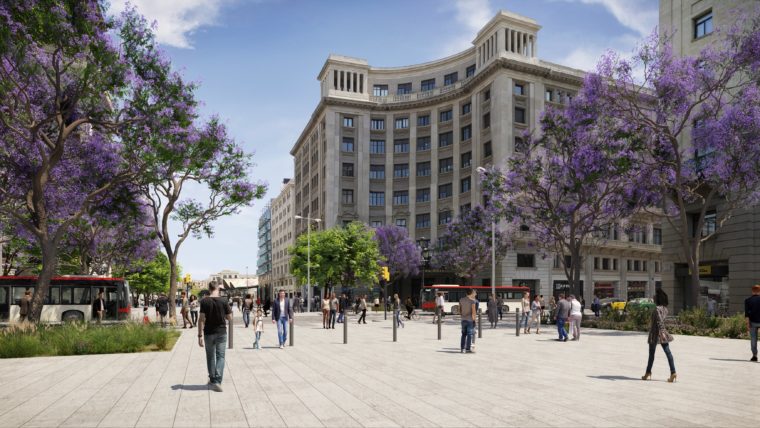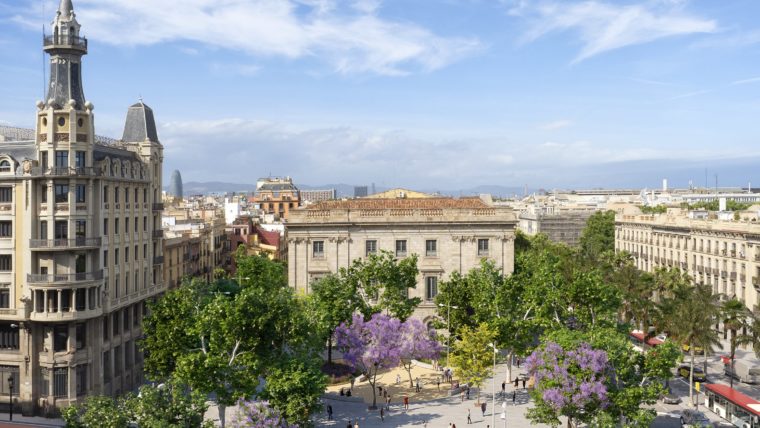Transformation of Via Laietana to get under way in March
Next spring brings the start of the project to revamp the Via Laietana, making it more people-friendly, with more space for pedestrians, bicycles and public transport, favouring local shops and businesses at the same time.
Pavements will be widened to 4.05 metres along the entire length of the street, encouraging walking and greater connectivity. A large square will be created at C/ Antoni Maura, connecting the cathedral with the Mercat de Santa Caterina, with new squares at the junctions with the main streets in Ciutat Vella. Specifically, at the junctions with C/ Jonqueres, where pedestrians will have priority, and at Pl. Àngel and Pl. Antonio López. Both spaces will get more trees and improvements will be made to paving and lighting.
In addition, pedestrian crossings are to be made bigger and repositioned. Calming measures will be applied in the streets of Fusteria, Àngel J. Baixeras and Consolat de Mar, with a much wider crossing than at present to connect the two squares either side of Via Laietana. Two new pedestrian crossings will also be added: one linking Pl. Correus with the Moll de la Fusta wharf, and the other directly with C/ Llauder, connecting with the neighbourhood of Barceloneta.
Safe and sustainable mobility
In terms of mobility, the uphill side will have a bus and taxi lane which can also be used by local residents in Via Laietana and Barceloneta, effectively doing away with Urquinaona-bound private traffic. The alternative for these vehicles will be to use C/ Picasso and Pg. Lluís Companys. As for the bike lane, this will be located next to the pavement in the side lane, separated from traffic. On the downhill side there will be a shared lane for buses and bikes, along with a traffic lane with a speed limit of 30 km/h.
The bus stops in the street will be located at the new squares, also guaranteeing space for private coaches. More space will also be added for taxi ranks and for loading and unloading.
The revamp to this iconic city street gets under way in March 2022. The Commission for Ecology, Urban Planning, Infrastructures and Mobility has approved the draft project, which will have an overall budget of 32.9 million euros, along with the final project for the first section.






